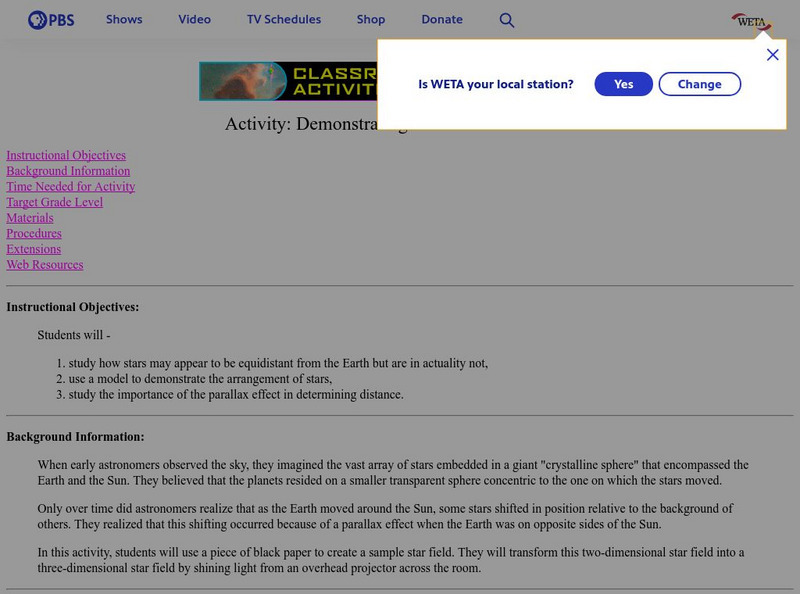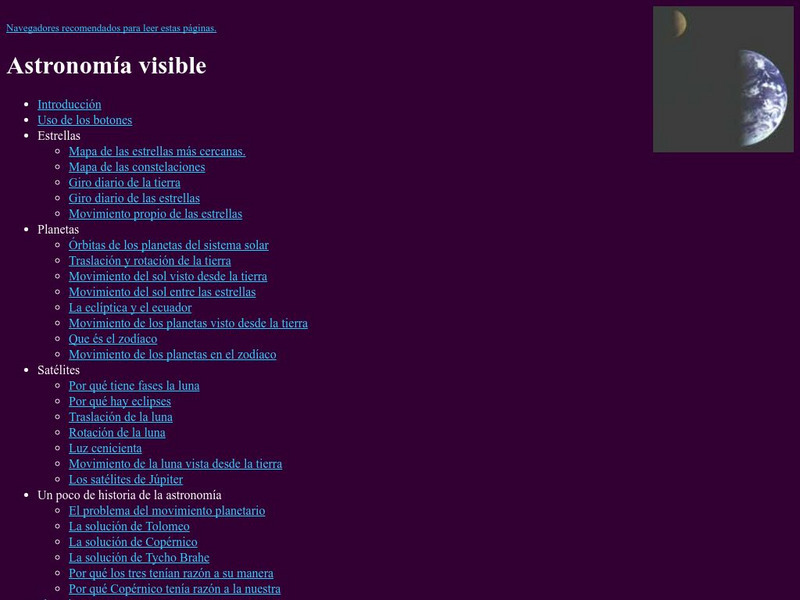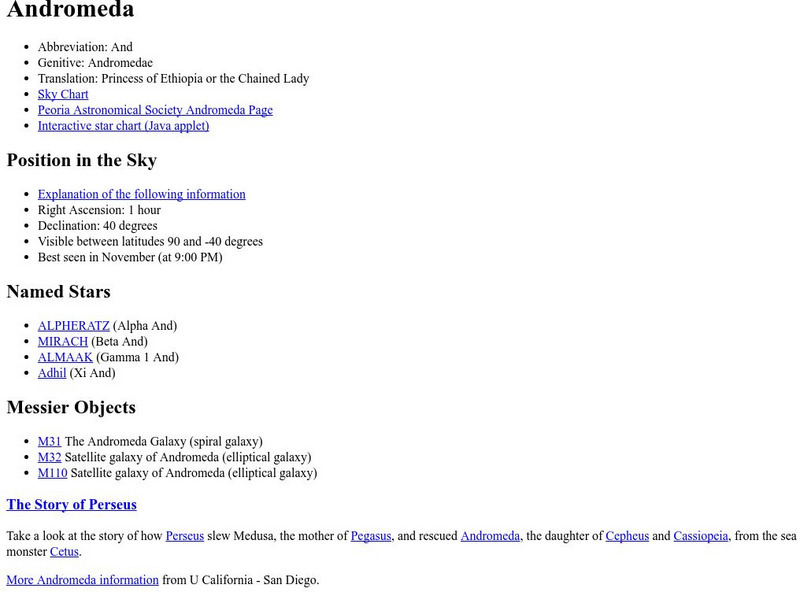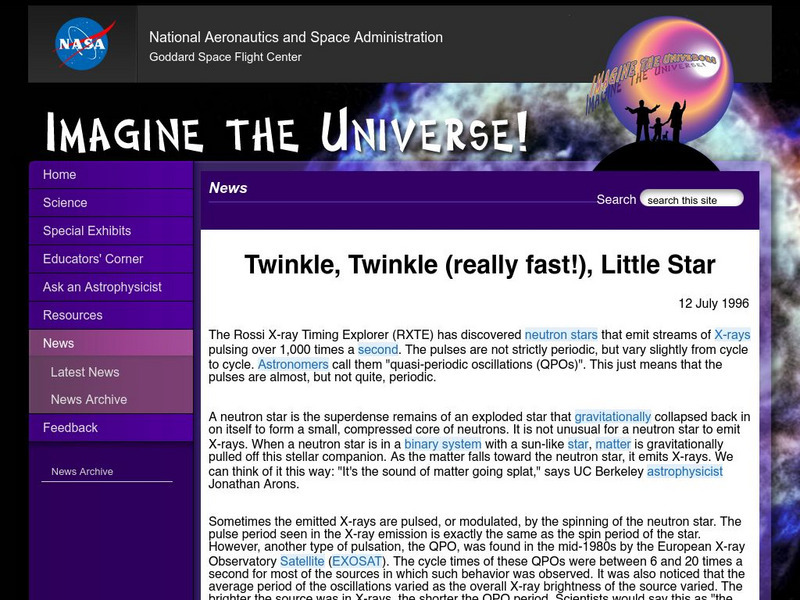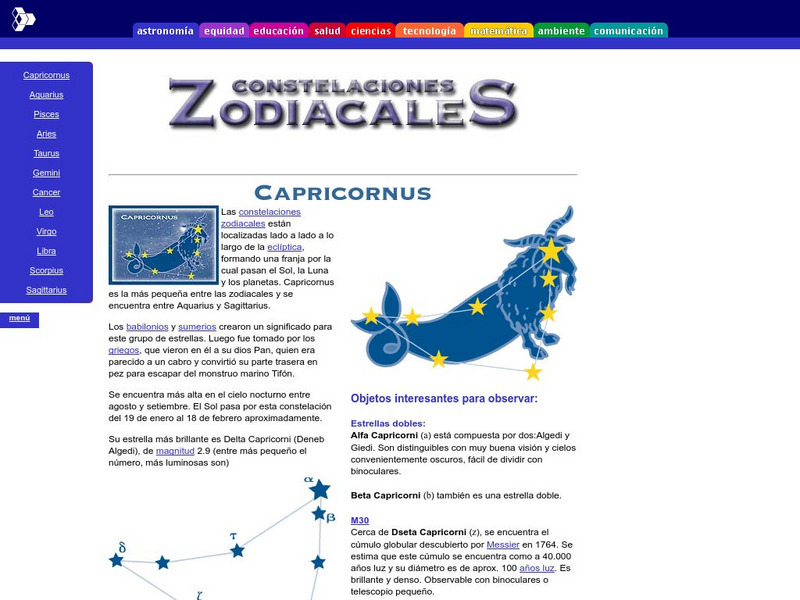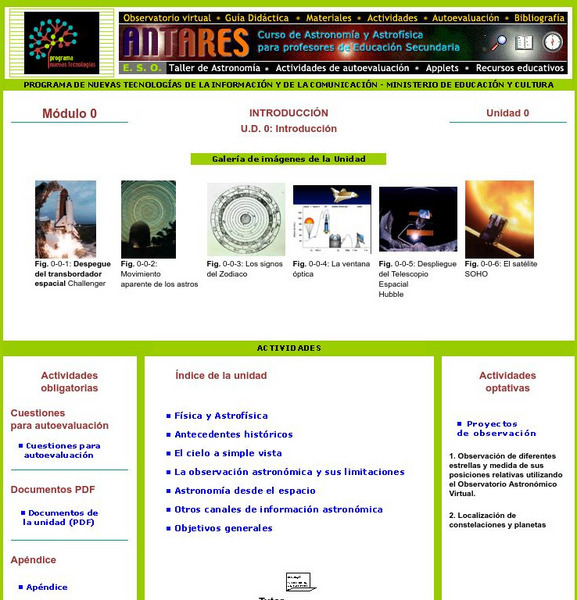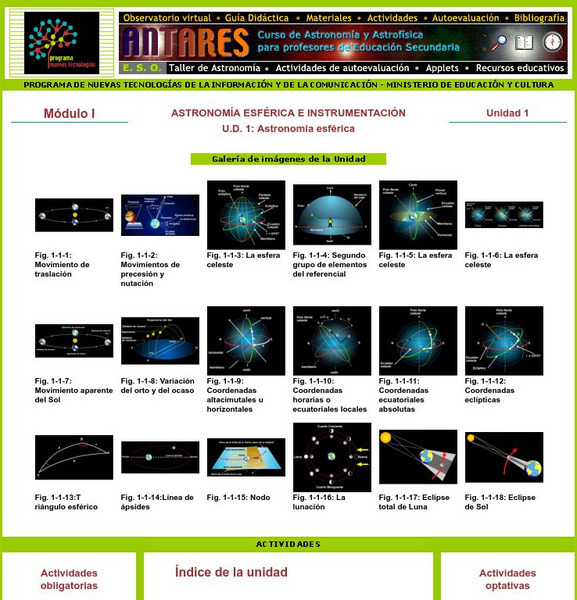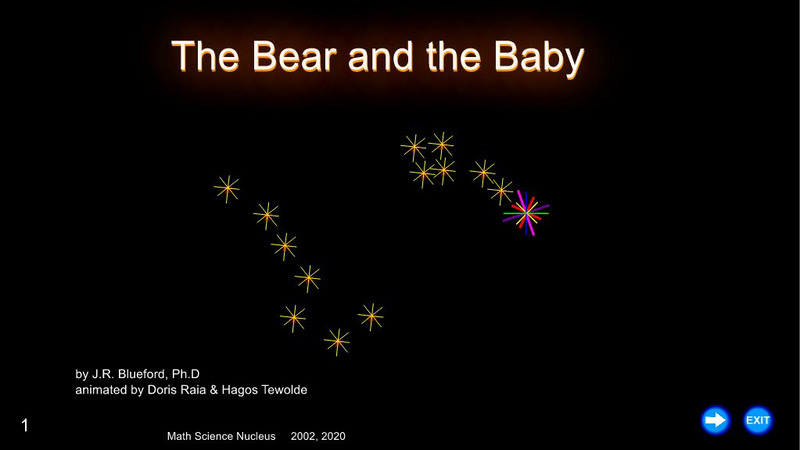NASA
Nasa: Imagine the Universe: X Ray Binary Stars
Site provides a brief introduction to binary stars. Additional resources for students and teachers on this topic are offered as well as related topics.
PBS
Pbs Teachers: Demonstrating the Distances of Stars
Investigate the use of the parallax effect for determining distance in space, and explore the arrangement and relative distance of stars in the galaxy. Create a sample star field and transform it into a three-dimensional model.
ClassFlow
Class Flow: Stars Project
[Free Registration/Login Required] This flipchart is a research project on stars, completed by first graders.
Enchanted Learning
Enchanted Learning: Zoom Astronomy: All About Space
A fantastic collection of information about the solar system. Includes information on all of the planets, the moon, the sun, asteroids, comets, meteoroids, and stars. Also find puzzles, a dictionary, quizzes, classroom activities, and...
University of Illinois
University of Illinois: Stars and Constellations: Planetary Nebulae
This resource contains information about planetary nebulae and their characteristics.
Ministerio de Educación (Spain)
Ministerio De Educacion: Astronomia Visible
This site has maps of the nearest stars and constellations. Earth and star daily rotation, proper motion of the stars and many other topics about the solar system are also shown.Read phonetically
Other
Hong Kong Space Museum
Besides an introduction to exhibitions and events at the museum, the site provides a guide to stargazing, an astronomy FAQ, space news, virtual tours (see site map) and research resources (including Chinese-English star and constellation...
NASA
Nasa: Make Star Cookies
This site from the National Aeronautics and Space Administration provides a fun project on stars and cookies. "Make these yummy star cookies with genuine star-colored centers you can see through." Plus, learn interesting facts about...
University of Wisconsin
Constellations and Their Stars: Andromeda
This site has factual information about Andromeda. Also contains other links.
Other
University of Rhode Island: Zodiac Constellations
Here's a short explanation about the twelve special constellations in the part of the sky called the Zodiac.
NASA
Nasa: Imagine the Universe: "Twinkle, Twinkle (Really Fast!), Little Star"
"The Rossi X-ray Timing Explorer has discovered neutron stars that emit streams of X-rays pulsing over 1,000 times a second." Visit this site to read the rest of this article. Site offers additional resources as well as a Teacher's Corner.
Fundación Cientec
Fundacion Cientec: Constelaciones Zodiacales
This site provides detailed history and star cluster location information for each zodiac constellation. Also includes links (mostly to Wikipedia pages) to additional information for keywords that appear in the articles.
Other
Neave Lab: Planetarium
This virtual planetarium allows you to view the sky as you wish. Using your mouse, point at stars to see their name, magnitude and constellation. You are also able to change the date, time, and location. This site is extremely...
Massachusetts Institute of Technology
Mit: Open Course Ware: Hands on Astronomy: Observing Stars and Planets
A university-level course in basic observational procedures in astronomy. Covers how to use a telescope, and includes lecture notes.
Ministerio de Educación (Spain)
Ministerio De Educacion: Introduccion Modulo 0
Observe different stars and measure its relative position utilizing the Virtual Astronomical Observatory.
Ministerio de Educación (Spain)
Ministerio De Educacion: Atronomia Esferica Modulo I Unidad 1
Recognize the major constellations and learn about the sky during the different seasons of the year. You will also be able to measure the height of the mountains of the moon.
American Museum of Natural History
American Museum of Natural History: O Logy: Stuff to Do: Stargazing
Get started on the road to becoming an expert stargazer by following these recommendations for identifying stars, planets, and constellations. Includes an example of a journal that can be used as a record of your investigations.
Other
Astromador: Astronomia Para Amadores
This resources focuses exclusively on astronomy. It's packed with historical facts about space exploration, famous people who pioneered the study of stars and planets. It features chronological list of space exploration, current news,...
ClassFlow
Class Flow: Constellations
[Free Registration/Login Required] This flipchart offers images and ideas for interdisciplinary study of the constellations. It suggests project based learning activities and a WebQuest link.
Greek Gods
Greek Gods: Demigods & Spirits: Pleiades
Read about the Pleiades, seven sisters and goddesses of the mountains, who were turned into doves and then stars to form the famous Pleiades.
American Association of Physics Teachers
Com Padre Digital Library: Open Source Physics: Local Coordinates Model
This astronomy simulation presents stars in their Altitude/Azimuth coordinates serving as an introduction to the celestial globe and equatorial coordinates.
Other
Sea and Sky: Celestial Objects
Empty space in outer space is not truly empty. Celestial objects fill the space not occupied by planets, stars, and such. This resource identifies these objects and further explains their existence.
Math Science Nucleus
Math Science Nucleus: The Bear and the Baby
This animation discusses the history of the constellations and the naming according to myths. The specific constellation dealt with in this animation is Ursa Major and Ursa Minor (the bear and the baby).
California Institute of Technology
Spitzer Science Center: Orion's Inner Beauty
Under the heading, "Orion's Inner Beauty" this site examines specific details of an image displaying the Orion nebula, which is stated to be "our closest massive star-making factory."



